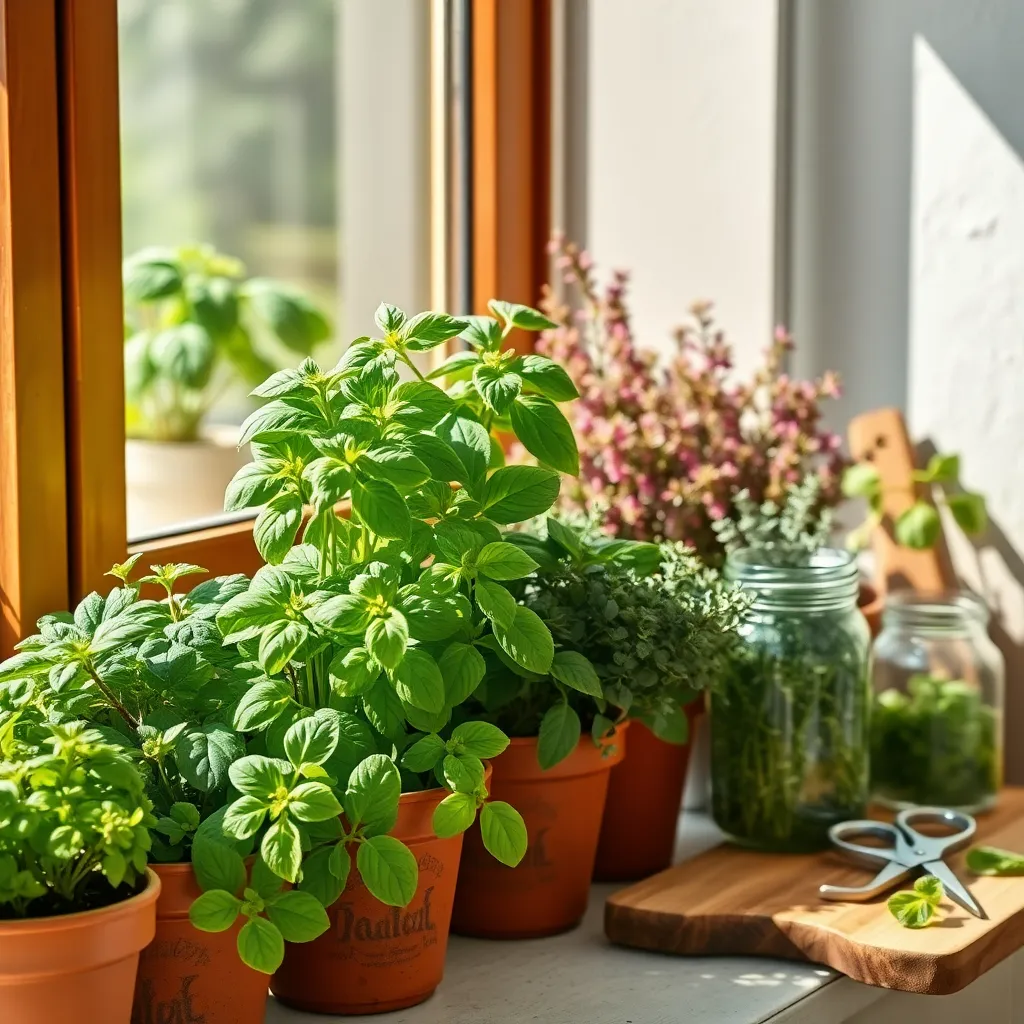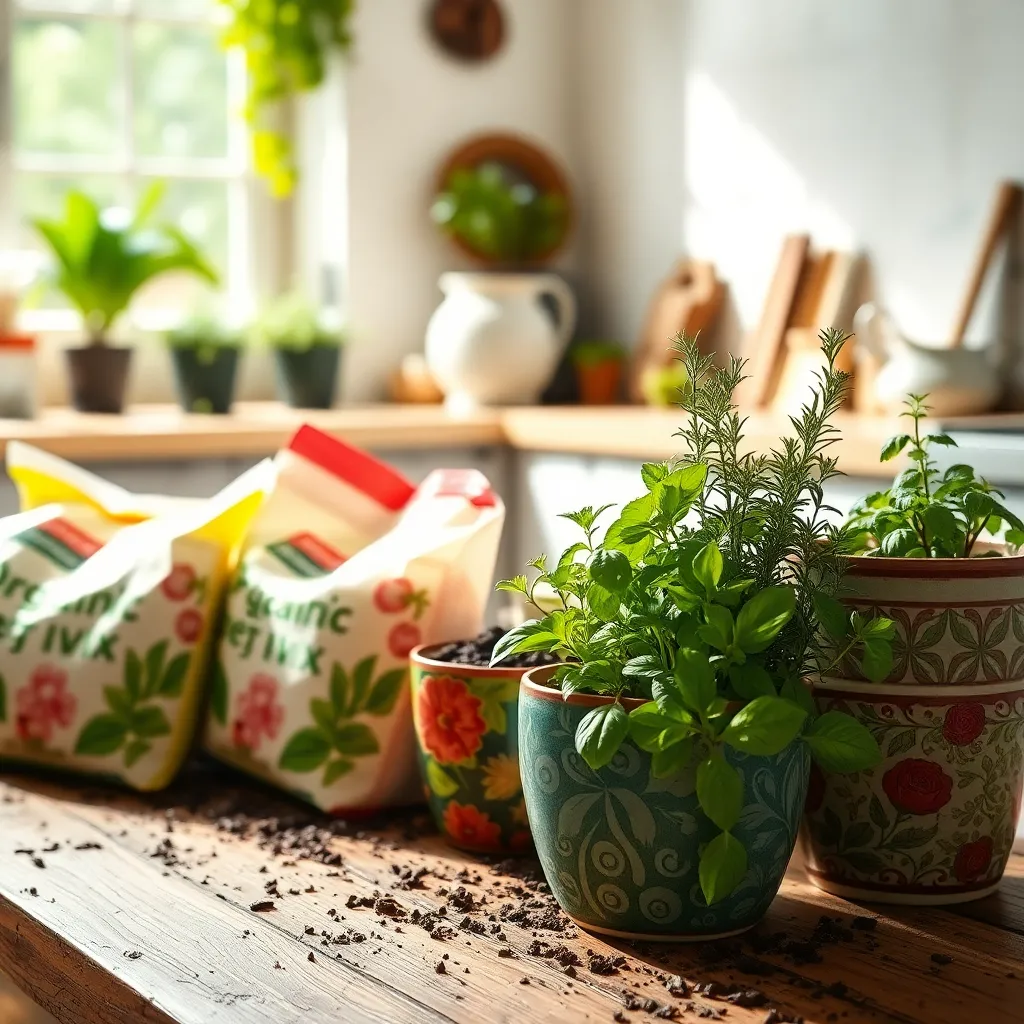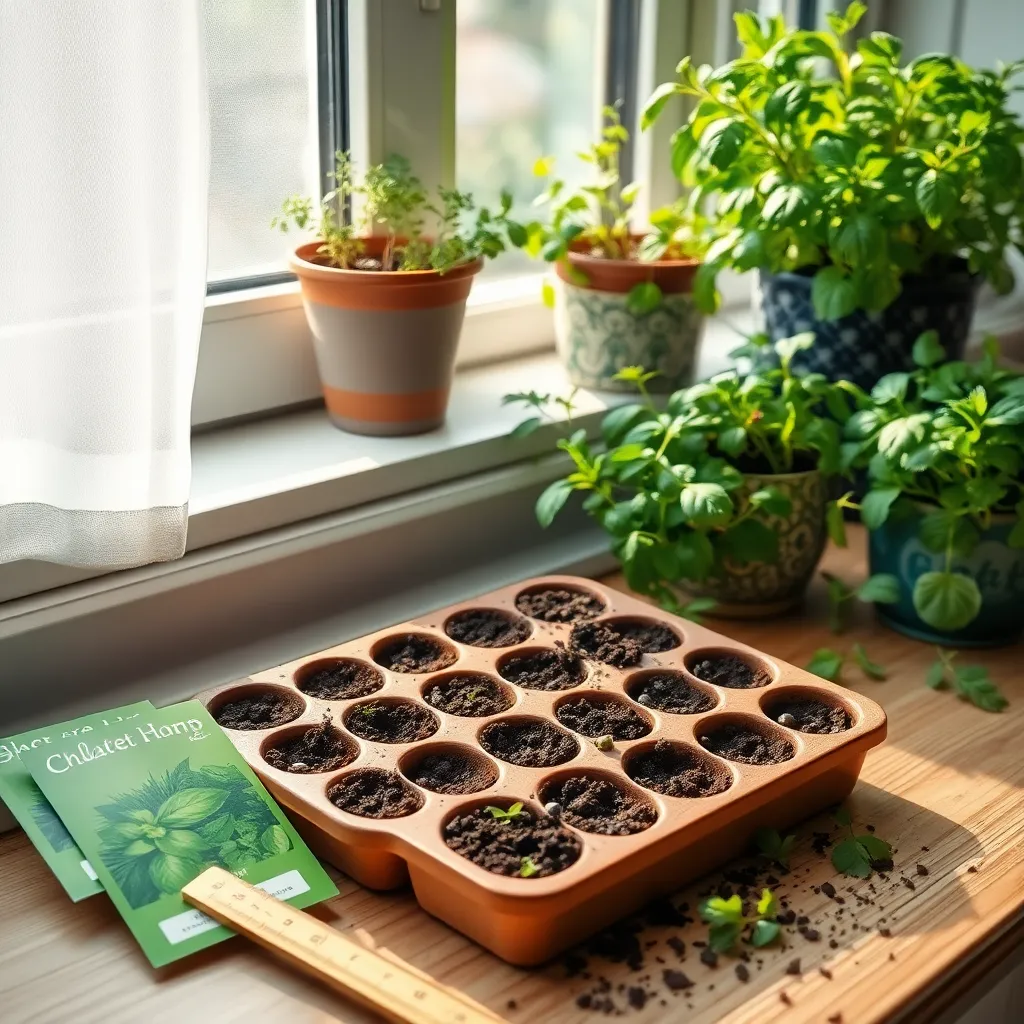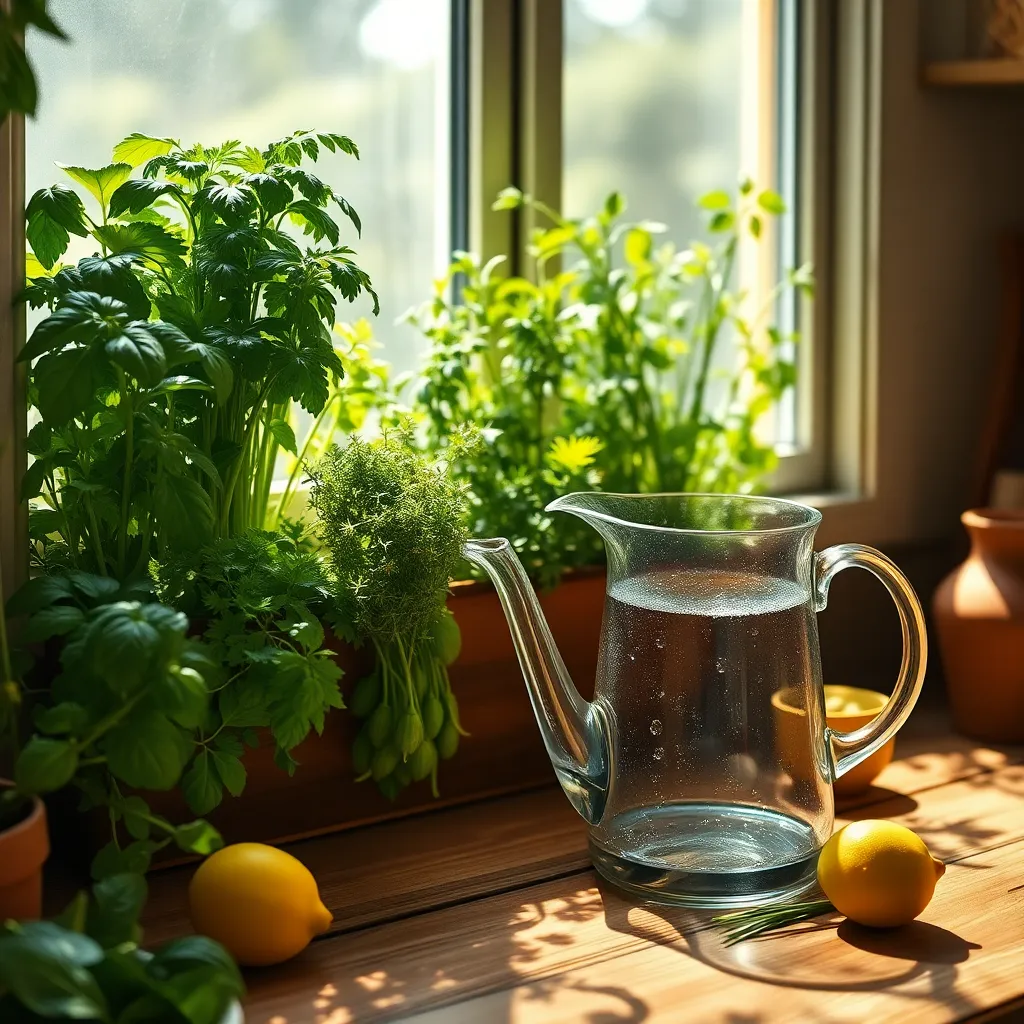Imagine the delight of snipping fresh basil or rosemary right from your kitchen windowsill, infusing your meals with flavors that are as vibrant as they are fresh. Growing herbs indoors is not just a delightful hobby but an empowering step towards a more sustainable lifestyle, whether you’re a novice gardener or a seasoned green thumb. It offers a unique blend of convenience and freshness, turning everyday cooking into an aromatic adventure. With the right guidance, even the smallest kitchen can transform into a thriving herb garden, providing a bountiful harvest just steps away from the stove.
For those just starting out, this guide will take you through the essentials of creating a kitchen herb garden, from selecting the right herbs to understanding their individual needs. Experienced gardeners will find valuable insights into optimizing growth conditions and troubleshooting common challenges. Together, we’ll explore everything from light requirements to watering techniques, ensuring your kitchen is always stocked with the freshest herbs. So, roll up your sleeves and get ready to cultivate a garden that not only beautifies your home but also elevates your culinary creations.
Select Suitable Herb Varieties

Choosing the right herb varieties for your kitchen garden begins with understanding your space and light availability. Most herbs thrive in plenty of sunlight, so prioritize windowsills with at least 6 hours of direct sun daily.
For beginners, easy-to-grow herbs like basil, mint, and chives are excellent choices. These herbs are forgiving and can tolerate varying conditions, making them perfect for indoor environments.
More experienced gardeners might consider adding rosemary, thyme, or cilantro to their collection. These herbs require more precise care, such as well-draining soil and consistent watering without over-saturation.
When planting herbs indoors, use a potting mix specifically designed for containers to ensure proper drainage and aeration. To further enhance growth, you might add a slow-release fertilizer every two months.
Watering frequency is crucial, and it largely depends on the herb variety and pot size. As a general rule, water herbs when the top inch of soil feels dry, but avoid waterlogging, which can lead to root rot.
Advanced gardeners can experiment with companion planting, pairing herbs like basil with tomatoes to naturally deter pests. Such techniques not only save space but also enhance the growth environment for both plants.
Prepare Containers with Potting Mix

To start, choose a high-quality potting mix specifically designed for container gardening. This type of soil mix ensures good drainage and aeration, essential for healthy herb growth.
Before filling your containers, check that they have adequate drainage holes to prevent waterlogging. If necessary, add a layer of small stones or pebbles at the bottom to enhance drainage.
Fill each container with potting mix, leaving about an inch of space from the rim to allow for watering. Firmly pat down the soil to eliminate air pockets, which can hinder root growth.
For those seeking an advanced approach, consider mixing in organic compost or a slow-release fertilizer to provide a nutrient boost. This extra step can significantly enhance the growth and flavor profile of your herbs.
Plant Seeds at Correct Depth

Planting herb seeds at the correct depth is crucial for successful germination and growth. Generally, the rule of thumb is to plant seeds at a depth of about twice their size, ensuring they are not buried too deep or left too exposed.
For tiny seeds like basil or thyme, a light covering of soil—approximately 1/4 inch—will suffice. Larger seeds such as dill or cilantro can be planted slightly deeper, around 1/2 inch, to provide adequate coverage.
When planting, gently press the soil over the seeds to ensure good seed-to-soil contact, which is essential for moisture absorption. Maintain a moist soil environment by misting the surface regularly, as this encourages prompt sprouting without disturbing the seeds.
Experienced gardeners might consider using a seed-starting mix, which is lighter and offers better drainage than regular potting soil. This specialized mix supports delicate seedlings by preventing waterlogging and providing a gentle environment for root development.
Position Pots for Optimal Sunlight

Choosing the right spot for your herb pots is crucial for their growth and productivity. Most herbs thrive in 6 to 8 hours of direct sunlight each day, so positioning them near a south or west-facing window is ideal.
If natural sunlight is limited, consider using grow lights to supplement your herbs’ needs. These lights can provide the necessary light spectrum for photosynthesis, ensuring your herbs stay healthy and vibrant.
Rotate your pots every few days to ensure all sides of the plants receive equal sunlight exposure, which promotes even growth. This simple step helps prevent your herbs from growing lopsided or stretching towards the light source.
For advanced gardeners, consider using a light meter to measure the intensity of light your herbs are receiving. This can help you make more informed decisions about their placement and adjust the environment as needed for optimal growth.
Maintain Regular Watering Schedule

Ensuring a regular watering schedule is crucial for the success of your kitchen herb garden. Most herbs thrive with consistent moisture, but it’s important not to overwater, as this can lead to root rot.
Begin by checking the soil moisture about an inch below the surface. If it feels dry to the touch, it’s time to water your herbs.
Consider watering in the morning when temperatures are cooler to reduce evaporation. This practice helps the plants absorb the moisture they need throughout the day.
For more advanced care, use a moisture meter to accurately gauge soil hydration levels. This tool can help prevent both overwatering and underwatering, ensuring your herbs remain healthy and vibrant.
Most herbs prefer well-draining soil, so consider a mix of potting soil with perlite or sand. This composition encourages proper drainage and prevents water from pooling at the roots.
Keep in mind that different herbs may have slightly different watering needs. For example, basil and mint prefer consistently moist soil, while rosemary can tolerate slightly drier conditions.
- Tip for Beginners: Set a reminder to check your plants’ moisture levels every two to three days.
- Advanced Tip: Group herbs with similar watering needs together to streamline your care routine.
Conclusion: Growing Success with These Plants
In nurturing both relationships and your kitchen herb garden, patience, communication, adaptability, attentiveness, and mutual growth stand as key concepts. First, patience teaches us that, like herbs, relationships take time and care to flourish. Communication ensures that, just as plants need the right environment, relationships thrive on understanding and openness. Adaptability allows us to adjust to life’s changes, much like repositioning a plant to catch the sunlight. Attentiveness, akin to watering herbs, is about being present and responsive to your partner’s needs. Lastly, mutual growth signifies that, as herbs enhance your meals, relationships enrich our lives when both partners grow together.
As an actionable next step, take a moment today to nurture an aspect of your relationship, whether through a heartfelt conversation or a simple gesture of appreciation. Bookmark this article to serve as a friendly reminder for these valuable insights. By doing so, you’re investing in a continuous journey toward relationship success, where your bond becomes as fulfilling and vibrant as a flourishing kitchen garden. Embrace each moment, and let your relationship thrive with love and understanding. Remember, the seeds you plant today are the roots of tomorrow’s happiness.
